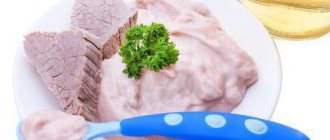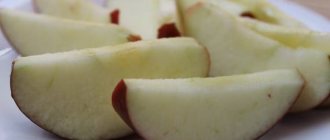Questions about the time of introducing complementary foods and the list of foods acceptable for each month have various controversial answers. After all, 20–30 years ago, children were given their first adult meals in the form of drops of juice in the second and third months of life, but today this is strictly prohibited, and the period of introduction to new products has been pushed back to 5–6 months. In addition, the rules and order of introducing complementary foods have changed. Some mothers find themselves in difficulty and cannot decide what can be given to a child at 5 months? To understand this, you need to consider the modern point of view of scientists, based on many years of experience and research activity.
When to start?
Having conducted major studies in the field of nutrition of babies in various countries of the world, WHO has developed recommendations with which most pediatricians and mothers with experience agree. They say that complementary feeding products are given from the age of six months in addition to breastfeeding.
In practice today, children's specialists adhere to the WHO methodology and for babies with normal indicators of height, weight, health and development, they recommend waiting until 5.5 or 6 months. It is recommended to start complementary feeding for a child at 5 months if the child is fed an adapted formula. This recommendation is especially relevant for babies with underweight, poor appetite or, conversely, with a constant feeling of hunger, as well as problems in physical development (if there is low hemoglobin, rickets, etc.).
Juices
After introducing dishes from zucchini, cabbage, apples, bananas, turkey, beef, etc. You can start getting acquainted with new drinks. Juices are allowed after the main complementary foods. Child's age is from 7 months.
Complementary feeding is primarily about replenishing deficient substances in the body and maintaining healthy growth and development, while juices are not able to perform such important functions; they complement the diet more.
Juices are not recommended to be given between meals. The drink is good to drink immediately after feeding. Juice between feedings leads to a constant feeling of fullness. Juices also contain large amounts of sugar, which is harmful to tooth enamel and also leads to excess weight gain.
The baby is gradually transferred to five meals a day.
Authorized Products
Having figured out the timing of administration, mothers ask the following question: what can be given to a child at 5 months? The main purpose of complementary feeding is to provide the baby’s body with additional calories and energy, so the prepared portion of the new product should have high energy and vitamin-mineral value.
By this age, babies begin to develop a deficiency of iron and zinc, which means that one of the following dishes is suitable for introduction: vegetable puree or gluten-free porridge. The successful introduction of complementary foods has been completed - after 2-3 weeks you can choose the next product.
A child's diet at 5 months may include a vegetable mixture of several components, porridge and fruit puree. Each dish has its own nuances, which should be understood so as not to harm the baby’s fragile body.
Meat complementary feeding will be next, but the child receives it by the seventh month. Fish, cottage cheese, kefir, yogurt, eggs, cookies and juices are introduced later.
How to start?
Zucchini, which is considered an easily digestible vegetable, is well suited for new meals. The menu for the week will consist only of this. Then you can offer broccoli puree. It is good to feed your baby purees consisting of several vegetables. Such dishes are much healthier.
Not all children are delighted with the change in their usual diet. For example, the taste of broccoli leaves much to be desired. You can instill a love for vegetable dishes if you give one spoon every day; after just one or two weeks, the baby will be happy to gobble up such a healthy product. The taste of vegetables will become familiar, and in the future the child will adhere to a healthy diet.
Food should not be forced to eat. Feeding should take place in a calm, friendly environment.
Diet
At the age of five months, the baby eats 5 times a day. Feeding a child at 5 months with artificial nutrition and successful absorption of complementary foods includes the following stages:
- The first time after waking up in the morning, the mixture must be given.
- The second meal in the form of porridge will gradually develop into a full milk breakfast for the baby after a year. After the porridge, you can offer dessert - fruit puree.
- For the third time at lunch, the baby receives vegetable mass.
- The fourth and fifth feedings are unchanged: the usual mixture.
When breastfeeding, the scheme is the same, only additional products are given at the second breakfast and fourth meal, since a break of 6-8 hours is fraught with a decrease in the lactation process in the mother’s body.
Diet of a five-month-old toddler
What can I give him to eat?
We all know from our mothers and even grandmothers that we need to start feeding babies exactly at 6 months. In six months and not a day later or earlier! However, if the child is bottle-fed, then the first complementary foods are shifted as much as two months earlier.
But the thing is that by the age of 4 months the baby’s need for vitamins increases significantly, and baby formula, alas, cannot provide him with all the useful substances that are so necessary at such a tender age for the growth and proper formation of the body.
The menu of a 5-month-old baby should include vegetables (especially if the baby has problems with constipation) or fruit purees (having tried sweets, there is a risk that the child will refuse vegetables; after all, fruits are so sweet and pleasant to the taste, unlike tasteless vegetables), or cereals, which are introduced first to low birth weight babies. Therefore, if your baby is chubby, postpone the introduction of cereals.
You can drink juices by diluting them with water 50/50, but it is not recommended, because they contain an insignificant amount of tiny substances important for health; in fact, juices do not provide any benefit.
What foods can be included in the diet?
It is recommended to give any new product in very small portions, about 5 grams on the first day. Let someone say, “Will a child get enough of this?!” If it doesn’t get enough, you will know whether you can continue feeding it or not. And in the first half of the day, in order to monitor the baby’s possible reaction throughout the day. You don’t want rashes, tummy problems and other troubles instead of a well-fed and happy baby?
Parents are often interested in what can be given to their child without fear of allergies. It's worth starting with hypoallergenic products. For example, zucchini, broccoli or cauliflower are ideal. Conversely, you should hold off on pumpkin and carrots, because brightly colored vegetables can cause all sorts of reactions, and you would like to avoid this.
As for porridges, it is recommended to start with buckwheat or rice. They need to be cooked only in water. No milk at five months of age!
Any baby puree must be made without adding salt, sugar or any other additives, which can be read on the packaging. And even if parents may find it tasteless and unpleasant, and someone may even exclaim “how can you eat this?!”, believe me, it’s possible, because the baby doesn’t need seasonings.
Meal table for the week
New parents want to feed their baby tasty and satisfying food so that he does not need any vitamins and minerals. And they wonder how to diversify the menu so as not to stuff the baby with the same zucchini? In fact, despite the fact that children at this tender age cannot eat all foods, their menu can be quite interesting and tasty.
| Monday | Dish | Quantity |
| First meal (6:00-7:00) | Adapted infant formula | 200 ml |
| Second meal (10:00-11:00) | Porridge | up to 150 g |
| Third meal (14:00-15:00) | Vegetable puree from cauliflower | up to 120 g |
| Fourth meal (18:00-19:00) | Apple fruit puree | up to 30 g |
| Fifth meal (before bedtime) | Adapted infant formula | 200 ml |
| Tuesday | Dish | Quantity |
| First meal (6:00-7:00) | Adapted infant formula | 200 ml |
| Second (10:00-11:00) | Porridge | up to 150 g |
| Third (14:00-15:00) | Broccoli vegetable puree | up to 120 g |
| Fourth (18:00-19:00) | Pear fruit puree | up to 30 g |
| Fifth meal (before bedtime) | Adapted infant formula | 200 ml |
| Wednesday | Dish | Quantity |
| First meal (6:00-7:00) | Adapted infant formula | 200 ml |
| Second (10:00-11:00) | Porridge | up to 150 g |
| Third (14:00-15:00) | Vegetable puree from zucchini | up to 120 g |
| Fourth (18:00-19:00) | Peach fruit puree | up to 30 g |
| Fifth meal (before bedtime) | Adapted infant formula | 200 ml |
| Thursday | Dish | Quantity |
| First meal (6:00-7:00) | Adapted infant formula | 200 ml |
| Second (10:00-11:00) | Porridge | up to 150 g |
| Third (14:00-15:00) | Vegetable puree from cauliflower | up to 120 g |
| Fourth (18:00-19:00) | Banana fruit puree | up to 30 g |
| Fifth meal (before bedtime) | Adapted infant formula | 200 ml |
| Friday | Dish | Quantity |
| First meal (6:00-7:00) | Adapted infant formula | 200 ml |
| Second (10:00-11:00) | Porridge | up to 150 g |
| Third (14:00-15:00) | Vegetable puree from carrots | up to 120 g |
| Fourth (18:00-19:00) | Pumpkin puree | up to 30 g |
| Fifth meal (before bedtime) | Adapted infant formula | 200 ml |
| Saturday | Dish | Quantity |
| First meal (6:00-7:00) | Adapted infant formula | 200 ml |
| Second (10:00-11:00) | Porridge | up to 150 g |
| Third (14:00-15:00) | Vegetable puree from zucchini | up to 120 g |
| Fourth (18:00-19:00) | Pear fruit puree | up to 30 g |
| Fifth meal (before bedtime) | Adapted infant formula | 200 ml |
| Sunday | Dish | Quantity |
| First meal (6:00-7:00) | Adapted infant formula | 200 ml |
| Second (10:00-11:00) | Porridge | up to 150 g |
| Third (14:00-15:00) | Broccoli vegetable puree | up to 120 g |
| Fourth (18:00-19:00) | Apple fruit puree | up to 30 g |
| Fifth (before bedtime) | Adapted infant formula | 200 ml |
After pureeing, it is necessary to supplement the baby with infant formula.
Vegetables
The most preferred first serving of adult food is vegetable puree. It contains relatively a lot of fiber, minerals and vitamins. Vegetables for complementary feeding are chosen when the toddler has normal or overweight or has problems with bowel movements in the form of constipation. Such products have an excellent effect on the functioning of the insufficiently mature intestinal tract.
There is another nuance. Having tried the sweet porridge, which is so close in taste to the familiar milk, a little gourmet may perceive the vegetable with disdain.
It is important to know what vegetables can be given to a 5-month-old baby. When choosing the first product, it is better to give preference to zucchini, cauliflower, light pumpkin or broccoli, while other products are not yet advisable at this age. If the baby’s body accepts the new product well, then after 10-14 days you can try offering a mixture of two vegetable components.
What can you feed a baby at 5 months, except juices and purees?
It usually takes one to two weeks for a child to adapt to complementary feeding. After he gets used to a certain product, you can add vegetable purees to your child’s diet. Vegetables such as potatoes, cauliflower, carrots, and zucchini are suitable for this. Just don’t try to diversify your child’s diet by including all the vegetables at once or making a kind of assortment of them. Accustom your child to everything gradually.
Sometimes it happens that after breast milk a child eats reluctantly, and sometimes even completely refuses vegetables. Don't rush to switch to another product. Give your child a chance to get used to it. Naturally, the puree should be fresh, warm and thoroughly ground. You can add a few drops of vegetable oil and a little mother's milk or dairy milk to the puree.
Which is better: homemade meals or canned food?
Some mothers cook for their babies themselves, others choose vegetable purees for children in jars. In fact, both options are good.
Preparing a vegetable portion for a baby is not difficult, especially in the summer and autumn. Choose a seasonal vegetable, boil it without adding salt, and then blend until smooth and thick. It will also be useful to cook it in a double boiler - it cooks quickly and almost all the vitamin components are not destroyed.
Food from jars is no worse, it is especially useful in the winter-spring season, when the amount of vitamin and mineral components in natural vegetables decreases. When purchasing, you need to pay attention to the composition, age group, production date and storage period. A children's finished product for this age should not have artificial additives or a large number of ingredients. You need to be prepared for the fact that at first the mother will have to finish almost all the puree from the jar. It is suitable for no more than a day when stored on the refrigerator shelf, and if you are late with the meal by more than 24 hours, then the portion will no longer be suitable the next day.
Artificial feeding and first complementary feeding
An artificial baby is more ready for complementary feeding than a baby fed on breast milk. Again, the decision to start complementary feeding is made by the doctor. The pediatrician is based on indicators of development, weight, height, other health problems or the absence thereof. But again, nothing else except vegetable purees or cereals is introduced into complementary foods.
Attention! The type of basic nutrition for a five-month-old baby: entirely breast-fed, artificial or mixed - has absolutely no effect on the variety of foods introduced. It can only be porridge or vegetable purees.
Porridge
Most little gourmets eat this dish with pleasure. Porridge will gradually replace second breakfast, providing the baby with energy reserves, protein, fiber and vitamin and mineral components. It perfectly solves the problem of missing grams, so it is prescribed to babies with low body weight as the first complementary food. When introducing it, you should know that you can give your child 5 months of cereals. Buckwheat, rice or corn porridge is suitable for this age. Only such cereals are classified as hypoallergenic, since they do not contain gluten. This type of protein provokes tummy pain and problems with the completely immature digestive system in babies. Introducing healthy oatmeal should be delayed until eight months, and semolina - up to a year.
Complementary feeding and allergies
Babies with food intolerances should try new foods around five months. It is necessary to act as in the case of a completely healthy baby. Parents should use only hypoallergenic products, and in general, the approximate menu for a child with allergies is the same.
The diet may change depending on the identification of allergens. The first meat dishes should be prepared from turkey or rabbit, as they are well absorbed by the human body.
How to cook porridge?
At the age of 5 months, a baby should not cook porridge with cow's or goat's whole milk. It contains amylase, which the baby’s body cannot break down due to the lack of certain enzymes. There are two ways to prepare a portion of porridge.
- The first is to thoroughly boil ordinary washed cereals in water and grind them in a blender into the finished mass. Sweetening or adding salt is not recommended.
- The second is to purchase age-appropriate commercially produced dry porridge from the baby food department. It is enriched with vitamin and mineral components and has a balanced formula. This method is more reasonable, since such porridge not only cooks quickly, but also has a pleasant taste, which is why it is very loved by growing gourmets.
Continuation of complementary feeding after vegetables
Porridge may now appear on the feeding table. They begin to be given after vegetable dishes. It is better to give preference to those that do not contain milk and gluten. Fortunately, there are plenty of them in stores.
Corn, buckwheat and rice cereals are suitable for cooking. Modern store-bought cereals are maximally balanced and enriched with vitamins and minerals. It is convenient to prepare such products, because it is enough to dilute the contents of the bag with water, and the product is ready for use. From now on, mothers no longer have to ensure that milk does not escape.
Is it possible to give fresh juices and fruit purees?
Everyone knows that the most vitamin-rich food is fruit. In addition, they, as well as fresh juices or fruit purees, contain many different acids, coarse fiber and fructose, and therefore irritate the gastrointestinal mucosa.
As a result, the baby may experience an unfavorable reaction such as regurgitation, disorders such as diarrhea, intestinal colic, abdominal pain due to high gas formation, or allergic rashes on the skin. Because of this, the introduction of fresh fruits has been delayed until a later date and is not suitable for a five-month-old baby.
What should fruit purees be like?
At the age of 5 months, the baby can only consume fruit purees from jars prepared by industrial enterprises. They have undergone heat treatment, so they do not cause irritation to the gastrointestinal tract and in most cases do not have allergic consequences. Puree in jars contains thickening elements such as starch, pectin and guar gum, which are characterized by enveloping and softening functions. Thanks to them, the irritating properties of fruits are also reduced. Many types of purees are additionally enriched with mineral and vitamin components.
Before buying a jar of product, you need to pay attention not only to the period of suitability and recommended age, but also to the composition. Fruit puree should not contain sugar, sweeteners, various food acids, dyes and similar components. The opened jar can be stored for no more than 24 hours (only on the refrigerator shelf).
Mom can make puree in her home kitchen. To do this, fruits need to be baked or boiled, and then chopped with a blender or rubbed through a sieve.
The most suitable fruit purees for five months of age are made from apples, pears, plums or bananas.
Product table
To make the task easier for mothers, experts have developed a list of products included in a child’s diet, by month.
The table below contains information about complementary foods, brief recommendations and serving sizes at 5-6 months of age. Product table
| Dish | Recommendations | Portion volume |
| Vegetable puree | Start with a one-component mass of white and green vegetables, after 2 weeks add another ingredient | The first time ½-1 teaspoon, then over 5–7 days the portion is about 150–170 g and replaces milk feeding |
| Dairy-free porridge | Only gluten-free cereals. After successfully introducing one type, you can try the next one. | Initially, the baby tries ½-1 teaspoon, later a single serving (150–170 g) will replace formula or breastfeeding |
| Fruit puree | You need to start with a one-component dish prepared using heat treatment of fruits, and as you master it well, you can introduce the following type | The initial sample of dessert after porridge is ½ teaspoon; in 5–7 days the dessert additive increases to 60–70 ml |
Recommendations for introducing first complementary foods
The first feeding will go without problems if you follow a number of simple rules:
- It is advisable to purchase baby food in stores. The finished purees have passed all the necessary tests, their production is strictly regulated, and the factories use environmentally friendly raw materials. Their consistency is excellent for an unformed digestive system;
- It is recommended to serve first courses with a regular teaspoon. It is advisable to use special rubberized children’s devices, not metal ones, as they are less dangerous;
- Portions should be increased gradually. At first, half a teaspoon is enough and within a week we should reach the age-appropriate norm. Other products can be introduced much faster; around the fifth day you can already bring the portion to the age norm;
- Complementary feeding should begin with single-component food products;
- It is preferable to give new products in the morning or during the day to monitor the baby’s condition;
- The occurrence of any disease in an acute form is a reason to postpone innovations. There is no need to rush into preparing new dishes; if you have recently undergone preventive vaccination, you should wait a few days;
- You should not start complementary feeding with gastronomic delights. To begin with, one food product is suitable, the volume of which should increase gradually. Then it is allowed to supplement meals with other foods.











